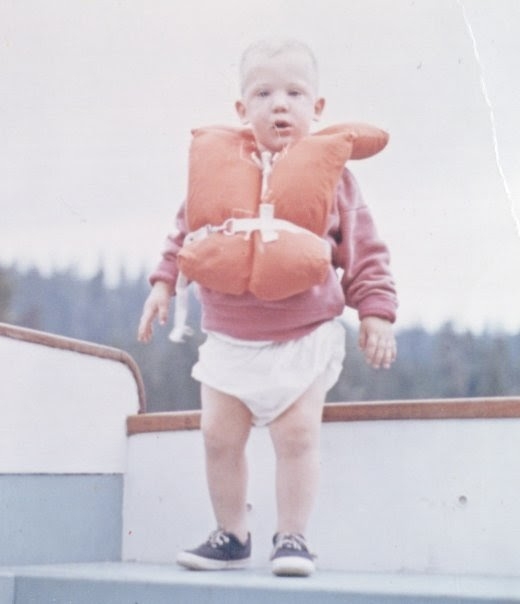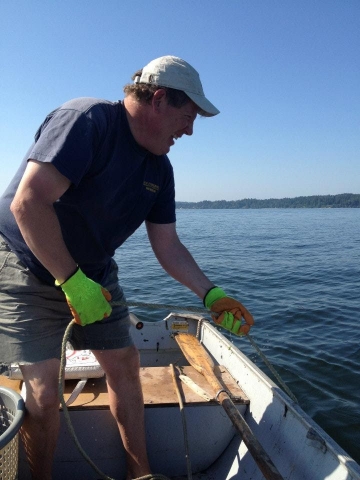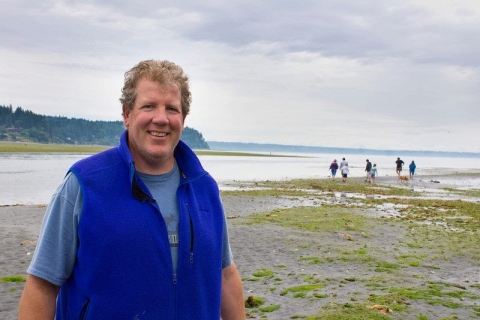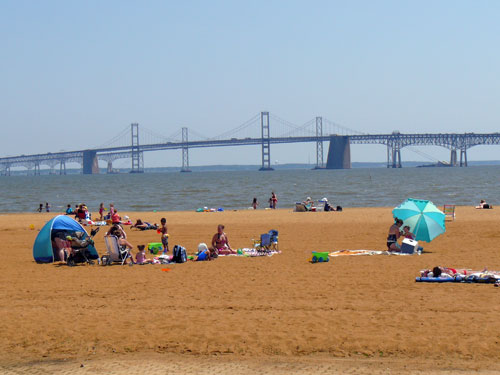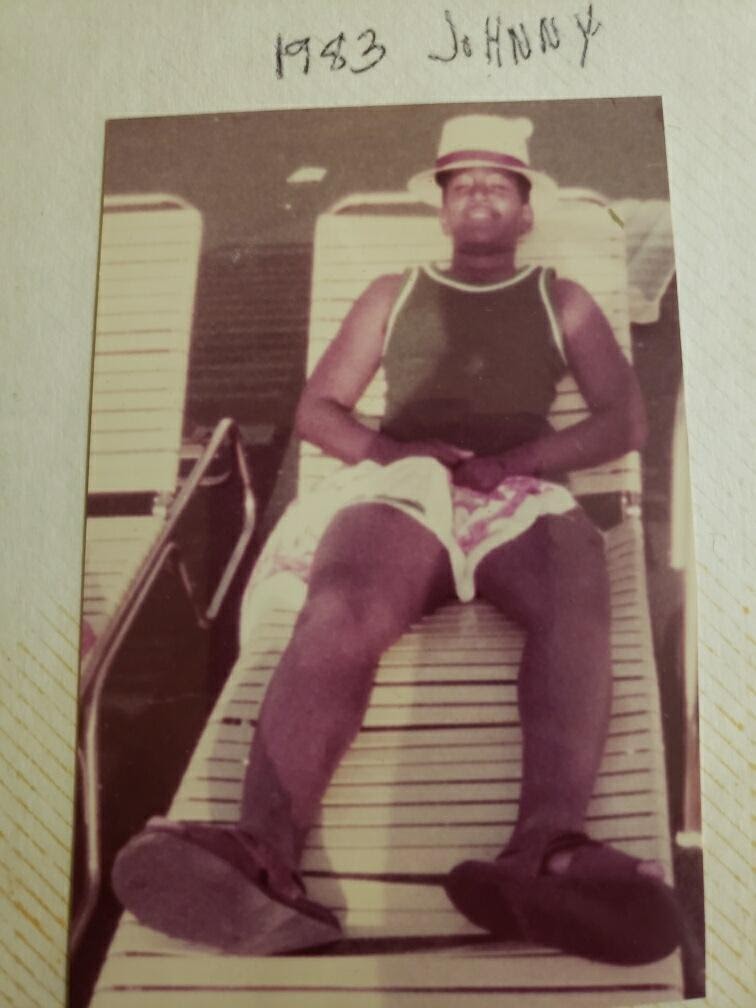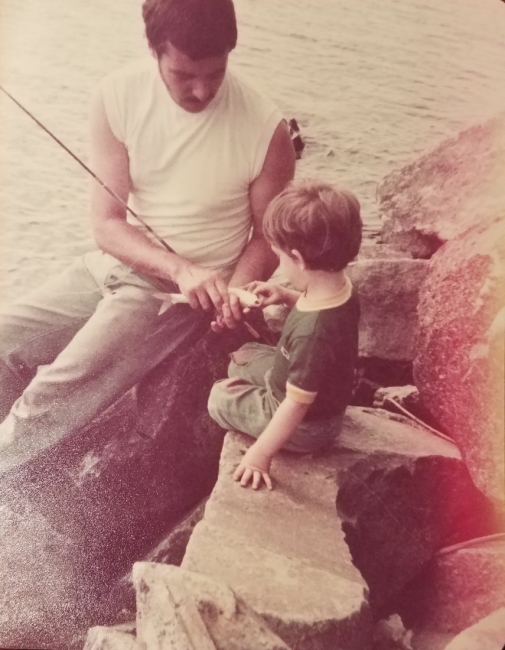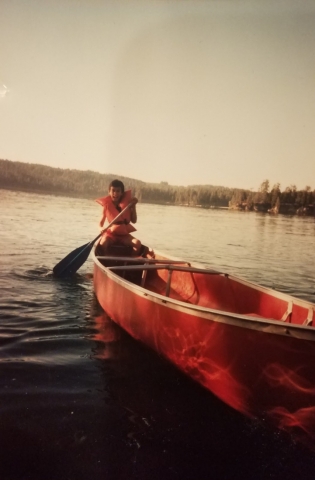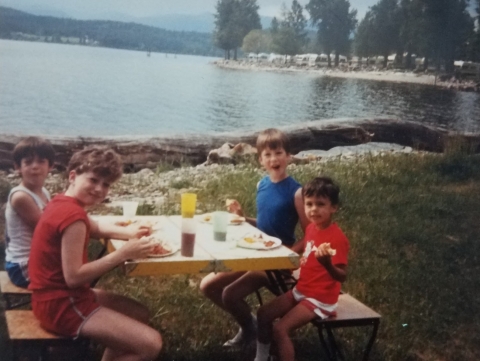Everyone at NOAA’s Office of Response and Restoration plays a crucial role in our mission. For many of us, our journey into the marine world can be traced back to a special place that first sparked a love of water and wild places. This installment of our monthly series “Homewaters” explores some of the waters that kindled a passion that would go on to last a lifetime.
Pebble Beach, Suquamish, Washington
I grew up on the western shores of the Salish Sea, near the tribal village of Suquamish, Washington. The tribe, known in the Coast Salish language as people of the clear salt water, has been there for thousands of years. My family’s cabin is just north of the village near the mouth of Miller Bay. We are newcomers, but four generations of my family have lived there. I grew up exploring the large tide flats and eelgrass beds that emerge at low tide, exposing all sorts of marine life – including dungeness crabs and geoduck clams. During the winter, the lowest tides are during the night, but we still visit and crank up the woodstove and get out lanterns to explore the beach at night.
Growing up here was a major part of my interest in marine science, and I have always been interested in the ocean and sea life. In high school, I built a tide gauge out of used bicycle parts!
My work on oil spills takes me all over the country. Unfortunately, one spill did occur nearby, a 2003 spill from the Point Wells oil terminal ended up oiling shorelines near our cabin. Spills have a personal and human dimension as well as an ecological impact. Fortunately, I was able to work with the Suquamish tribe and other agencies to help develop the restoration plan. It was hard to see the booms and oil sheens on the bay I knew so well. I carry that memory with me when I work on distant spills.
—Doug Helton, Regional Operations Supervisor in Seattle, Washington
Washington D.C. and the Chesapeake Bay
When I think about the waters around where I grew up, in Deanwood east of the Anacostia River in Washington D.C, I think about community. Parks and beaches were the scenes of big neighborhood block parties. Everyone I knew would come out to cook blue crab, hamburgers, and hotdogs at Hains Point Park right near the monuments. We kids would run around while the parents talked and fished, even though it wasn’t safe to eat anything that came out of the Potomac. We always wondered why they fished there-turns out it was just for fun.
There were other places we’d go too. Sandy Point Beach near Annapolis where I remember getting stung by jellyfish and the remedy my big brother prescribed. Bay Ridge Beach had a swimming pool to avoid that scenario, but they charged an entrance fee so that was a special thing. In my neighborhood there was also the Anacostia River, but that wasn’t a safe place. In the ‘80s it was the site of crime, violence, and pollution. You used to be able to smell the smokestacks coming from the coal plant. I never felt that was good for the community.
Twenty years later, I take my kids to some of these same places. We bike around Hains Point, hang out and eat some crab. It’s not the same as it was back then, big groups don’t get together anymore. Maybe it’s just because things are less structured-or because things are more crowded. But during my time at NOAA I’ve also learned about blue crabs and the Chesapeake, the things and places that impact real people. My memories aren’t the same ones my kids will have, but it’s still about having fun at these public places-being outside and making memories.
—John Hillman, IT Specialist in Silver Spring, Maryland
Lake Pend Oreille, Sandpoint, Idaho
I grew up about an hour's drive south of the Canadian border in a little north Idaho town called Sandpoint. The town of Sandpoint sits on the edge of Lake Pend Oreille (pronounced Pond Or-A), the 38th largest lake in the U.S. and, more impressively, the fifth deepest lake in the U.S. at 1,150 feet.
The geology behind the lake’s depth comes from its location just downstream from where a huge ice dam formed, broke, and reformed over and over again during the last ice age. The successive floods triggered by the breaking of the ice dam not only carved out the deep lake, but also played a large role in the current geology of eastern Washington and the Columbia river basin.
I can remember many a summer weekend spent at local parks swimming in the clear (and cold!) waters of Lake Pend Oreille. Later on as a teenager some of my friends were fortunate enough to have small boats and we did everything from water skiing to camping to fishing out on that lake.
The roots of my passion for the environment stem from my time in the mountains and lakes of northern Idaho, and have only increased as I have watched how those, and other waters have changed over time. My desire to protect our coastal regions comes from my wish that future generations will have the chance to experience nature as I did growing up.
—Andrew Mason, Marine Debris Program Regional Coordinator in Seattle, Washington

